-
Car Reviews
- All reviews
- Midsize SUVs
- Small cars
- Utes
- Small SUVs
- Large SUVs
- Large cars
- Sports SUVs
- Sports cars
- Vans
Latest reviews
- Car News
-
Car Comparisons
Latest comparisons
- Chasing Deals
As the cheapest PHEV currently on sale in Australia, the MG HS Plus EV looks like the perfect answer to woes at the petrol pump, but how does it stack up against more expensive rivals?
In a not too distant past, the choice when it came to electrified vehicles was easy; you either drove a Toyota Prius – or you didn’t. These days, things are a lot more complicated with the sheer breadth of electrification on offer – but it’s all in the name of saving motorists at the petrol pump.
Sitting in the middle ground between hybrids and EVs, the plug-in hybrid electric vehicle (PHEV) is still a relatively new concept in the automotive industry – but while PHEV is often a byword for expensive, that isn’t the case for the MG HS Plus EV.
It may be called the “Plus EV”, but this variety of the MG HS midsize SUV is a plug-in hybrid, pairing MG’s 1.5-litre turbocharged petrol four-cylinder engine with an 90kW electric motor and 16.6kWh battery, which in our testing provided a great electric-only range of 63km.
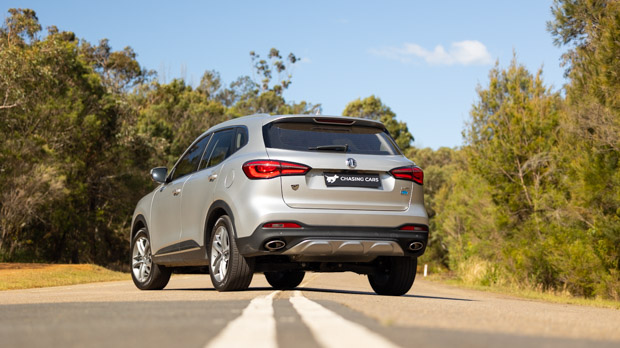
Starting at around $48,690 on the road, the MG HS Plus EV is the cheapest PHEV on sale in Australia, beating out the smaller Mitsubishi Eclipse Cross PHEV by around $2000.
In standard Excite form, the HS Plus EV offers an impressive amount of kit, including adaptive cruise control and Apple CarPlay/Android Auto as standard.
Making the jump to the range-topping Essence comes at a $3000 premium, but adds a few nice touches on the inside and out, including a panoramic sunroof, a 360 degree camera, and 18-inch alloy wheels.
There’s no denying that the MG HS Plus EV is priced competitively, but is it a worthy competitor in the busy PHEV space of 2022?
How good the MG HS Plus EV is to drive depends greatly on how much charge you have in the car’s battery. When charge is plentiful, this SUV is peppy – even quick – but when it’s flat, it is thirsty on petrol and fairly slow to accelerate.
Under the bonnet of the HS plug-in hybrid sits a turbocharged 1.5-litre petrol engine that’s paired with an electric motor. All up, this combination is good for 189kW and 370Nm of torque, which is sent through a ten-speed automatic transmission to the front wheels exclusively.
But this is where the complexities of the HS’ powertrain start, as there is no traditional automatic transmission as we know it.
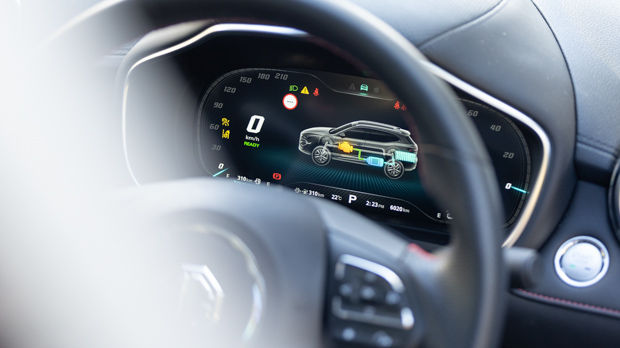
The HS Plus EV instead uses a standard torque-converter automatic transmission, but with six gears dedicated to the petrol engine while the remaining four ratios are assigned to the electric motor.
According to MG Australia’s website, this unit works to “ensure the switch between electric and petrol power is all but invisible,” but I’d argue that the changeover from the four electric forward gears to the six assigned to the petrol is an obvious one.
There’s no denying that the HS PHEV is a great drive with a full battery, the electric motor making up for the engine’s shortcomings in small bursts, but there’s no mystery as to what it’s doing at any given moment. Sound and driving cues are there for those that keep tabs on what’s happening, but for most drivers, it’ll go unnoticed.
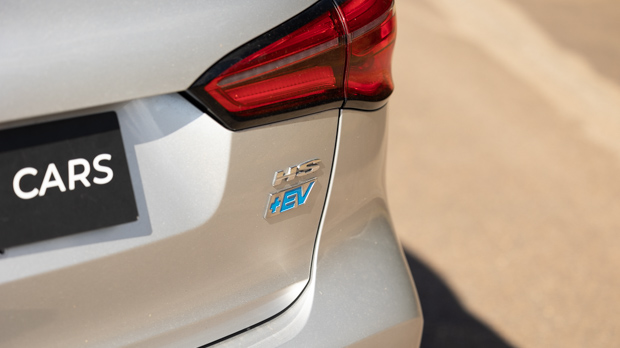
It’s also worth noting that even if the ‘EV Mode’ button is selected, the petrol engine will still be fired up upon a cold start. This seems to be so that the electric drivetrain components can be brought to temperature before use, but it does disrupt the serenity of the electric experience momentarily.
In terms of performance, MG claims that the HS Plus EV will hit 100km/h from a standstill in just 6.9-seconds. Here, it’s quite entertaining in the fact that it’ll have little trouble in chirping the front wheels and torque steering its way off the line.
The brand also claims that this shades “almost every SUV on sale at less than $50,000,” which is true…when there is charge in the battery. However, if the battery is depleted – say, you’ve already exhausted all of the car’s electric driving range – the performance is much more lethargic. In our independent acceleration testing, we struggled to get the HS Plus EV below the 10sec 0-100km/h mark once the battery was exhausted.
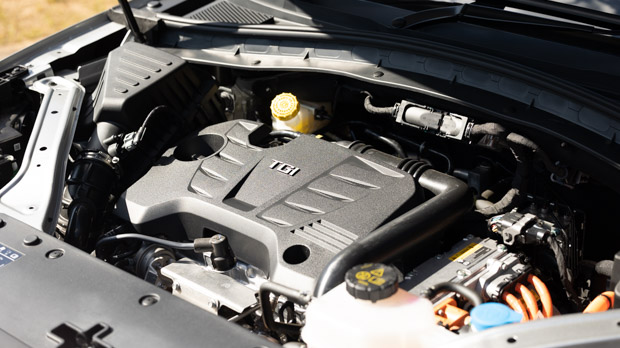
In normal driving situations, where performance isn’t a consideration, I found myself being confused as to why the HS would prioritise using petrol power over battery. Selecting EV mode was one way to combat this, but considering that one of the main purposes of this vehicle is to conserve fuel, it seemed counterintuitive that it would default to the engine in hybrid mode.
On the ride front, ‘fine’ is the best word I can use to describe how the HS Plus EV handles. In normal circumstances it offers a comfortable ride, but questionable road surfaces are quick to poke holes in the HS’ suspension system. The somewhat jarring ride is most noticeable over things such as speed bumps and potholes, but as long as a bit of care is taken around these, drivers should remain in comfort.
The cornering abilities of the HS Plus EV follow a similar theme: as family SUVs go, the MG is adequate in terms of handling – and that’s OK. The roadholding ability of this 1775kg midsize SUV is up to scratch, and although it makes little effort to reduce body roll, it’s nothing scary. The steering is a little slow for my liking, though.
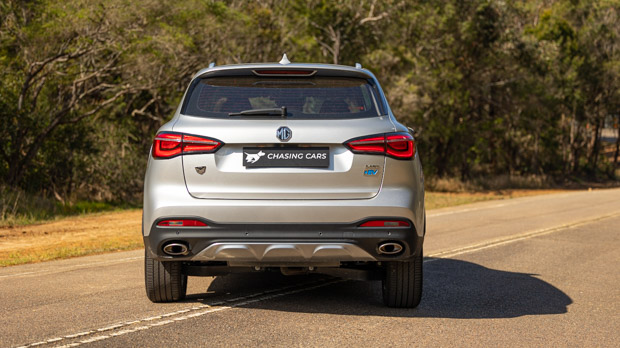
In terms of safety, the HS Plus EV has not been tested by ANCAP, but the regular petrol HS was rated at five stars back in 2019.
In terms of technology, it gets the ‘MG Pilot’ safety suite as standard across the entire HS range (non hybrids included), which adds an array of advanced systems.
These include adaptive cruise control, forward collision warning, automatic emergency braking, lane departure warning, and a few others. I found the forward collision warning to be a bit too overactive for my liking, as it would beep from a fair distance away, even if I had full control of stopping the vehicle.
The interior is one area where the HS Plus EV shines in more ways than one – but its strong potential is partially let down by dated cabin technology.
As far as first impressions go, they don’t get much better than the cabin of the HS Plus EV. It’s clear that MG has taken inspiration from the likes of Mercedes-Benz here, from the cabin layout as a whole, all the way down to the generous use of soft-touch materials.
Almost every surface within arm’s reach of the driver and passenger is covered in some form of soft-touch material, only slightly let down by cheaper-feeling piano black surrounds of the air vents.
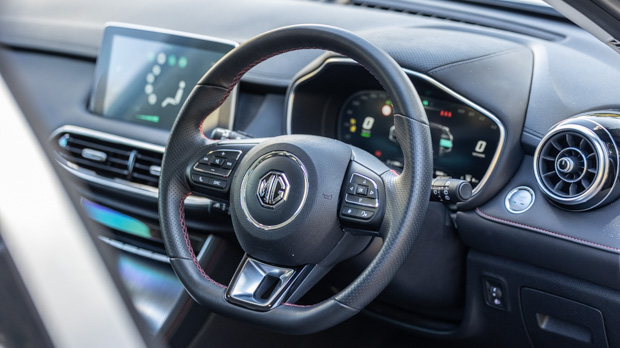
The red contrast stitching hints at a sporty nature that the HS Plus EV doesn’t possess, but it makes it feel a bit more upmarket. The aluminium trim surrounding the gear selector follows the same theme, and ties into the silver trimmings nicely.
The front sport seats in the range-topping Essence model were another aspect that I was extremely impressed by. Not only do they look like something that you’d find in an AMG, but they’re also extremely comfortable. Shorter drivers might find the integrated head rest a bit of a pain, as it isn’t adjustable in any direction.
In terms of displays, the HS Plus EV gets a 12.3-inch digital cluster, and a 10.1-inch infotainment screen in the middle of the dash. Apple CarPlay and Android Auto connectivity is included as standard, both drivers will need to plug their phone in first.
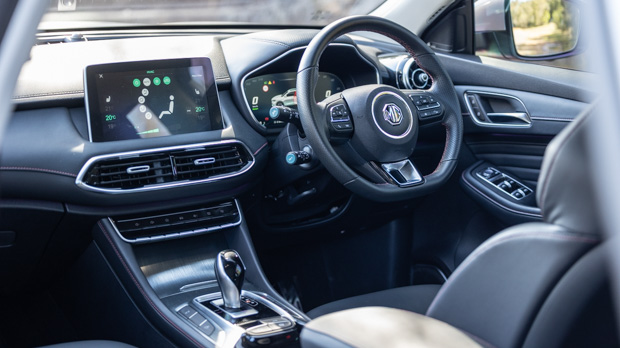
To get the most out of the system, I’d suggest using either of those mirroring options, as the standard MG system feels dated to use. Touch functions are laggy, and the in-built navigation is extremely basic. The air conditioning controls are also housed within the touchscreen which makes them a little slower to operate than trusty dials or buttons.
Without a volume knob, drivers have the option of using either the buttons on the steering wheel, or the one beneath the infotainment screen, and neither work amazingly. There’s no satisfying feeling with either, and they’re rather laggy.
Head and legroom is adequate across both rows of seating, and it’s worth noting that foot room in the middle seat isn’t significantly impacted by a raised transmission tunnel. Boot space with the second row of seating in place sits at a modest 451 litres, but this jumps to 1275 litres with the seats folded.
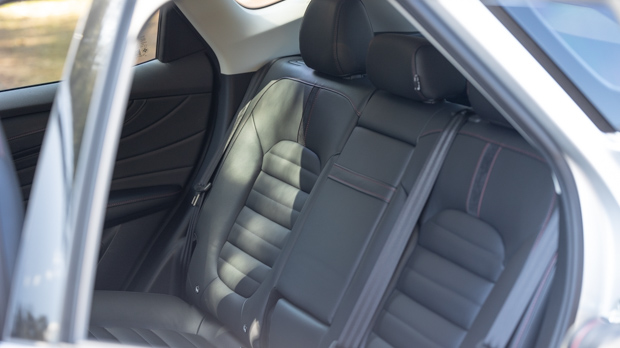
As is the case with most PHEVs, the running costs of the HS Plus EV depend very much on whether you can commit to charging the SUV on a regular basis.
For owners with a convenient charging spot at their home or workplace, the HS Plus EV – like other plug-in hybrids – can be amazingly cheap to run. If you don’t have this, the running costs can be similar to a regular petrol-powered car.
MG claims a combined fuel economy of 1.7L/100km, but this isn’t overly representative of a real world scenario, assuming that drivers will always depart with a full battery. To get a more accurate reading, we tested the fuel consumption of the HS Plus in three scenarios, with varying results.
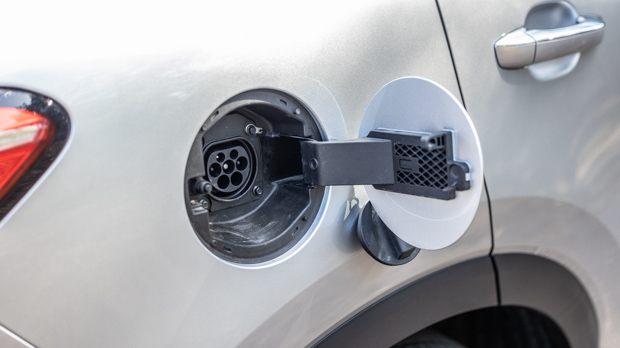
First was the electric-only range test. We topped up the HS Plus EV’s 16.6kWh battery to 100 percent, hoping to achieve MG’s claimed electric driving range of 63km. Selecting the EV-only driving mode, we hit a combination of urban roads and motorways, mimicking a typical Australian commute – and we hit 63.6km before the engine forced itself on. Very satisfying.
Next up, we tested the car in hybrid mode with a full battery. In hybrid mode, the HS has a habit of using the petrol engine over the electric motor at speed, conserving the battery for start-stop work but increasing fuel consumption on the stint at hand.
After a couple of hours on the road, the MG returned a figure of 5.3L/100km, which is similar to the likes of the Toyota RAV4 hybrid despite the HS having a nearly 10x-bigger battery than the Toyota.
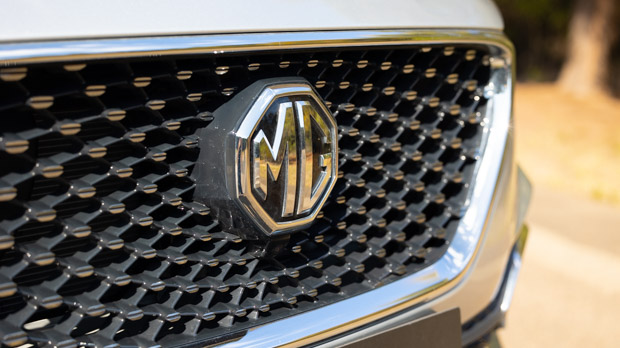
Lastly, the MG was tested in hybrid mode with a depleted battery, in which it returned a figure of 9.2L/100km – on par with a regular petrol-powered midsize SUV.
On the servicing front, MG offers a capped price plan at $265 each time. This can last for up to seven years or 70,000km, in which owners can expect to spend $1855 in total. This is significantly cheaper than what the same plan would cost owners of a Mitsubishi Eclipse Cross PHEV, who can expect to shell out over $2793 over the same period.
MG offers a seven year/unlimited kilometre warranty across the whole range in Australia, including its hybrid and electric vehicles.
As a whole, Australia’s cheapest PHEV SUV has a lot going for it, but is let down in a couple of key areas.
The electric range of 63km is extremely impressive in itself, and if owners can keep the HS Plus EV topped up at night, it will be an extremely cheap, family friendly SUV.
Dipping into petrol power isn’t something that owners would want to be doing frequently with its relatively high consumption figure for a hybrid – but it is nice to have the security of long driving ranges using petrol as well as electricity, which is the key benefit of a PHEV.
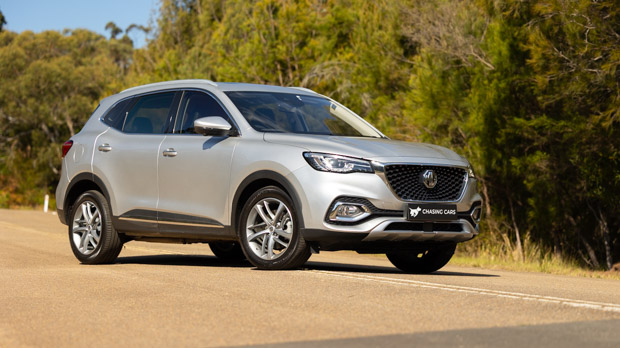
There’s no denying that the handsome interior’s positives are tempered by an infotainment system that could be improved, but if drivers use some form of phone mirroring, this shouldn’t be an issue either.
For those looking to make the transition into electric motoring, but don’t want to lose the crutch of a petrol engine, then the HS Plus EV is a solid choice at a remarkably affordable price – but be prepared to live with its imperfections.
Key specs (as tested)
About Chasing cars
Chasing Cars reviews are 100% independent.
Because we are powered by Budget Direct Insurance, we don’t receive advertising or sales revenue from car manufacturers.
We’re truly independent – giving you Australia’s best car reviews.
The estimate provided does not take into account your personal circumstances but is intended to give a general indication of the cost of insurance, in order to obtain a complete quote, please visit www.budgetdirect.com.au. Estimate includes 15%^ online discount.
^Conditions Apply
Budget Direct Insurance arranged by Auto & General Services Pty Ltd ACN 003 617 909(AGS) AFSL 241 411, for and on behalf of the insurer, Auto & General Insurance Company Limited(ABN 42 111 586 353, AFSL 285 571).Because we don’t know your financial needs, we can’t advise you if this insurance will suit you. You should consider your needs and the Product Disclosure Statement before making a decision to buy insurance. Terms and conditions apply.
Indicative quote based on assumptions including postcode , 40 year old male with no offences, licence suspensions or claims in the last 5 years, a NCD Rating 1 and no younger drivers listed. White car, driven up to 10,000kms a year, unfinanced, with no modifications, factory options and/or non-standard accessories, private use only and garaged at night.
^Online Discounts Terms & Conditions
1. Discounts apply to the premium paid for a new Budget Direct Gold Comprehensive Car Insurance, Third Party Property Only or Third Party Property, Fire & Theft Insurance policy initiated online on or after 29 March 2017. Discounts do not apply to optional Roadside Assistance.
2. Discounts do not apply to any renewal offer of insurance.
3. Discounts only apply to the insurance portion of the premium. Discounts are applied before government charges, taxes, levies and fees, including instalment processing fees (as applicable). The full extent of discounts may therefore be impacted.
4. We reserve the right to change the offer without notice.